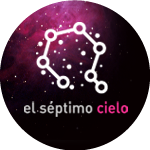A bit of background, its origins:
In 2004 an agreement was signed between the Spanish “Consejo Superior de Investigaciones Científicas” (CSIC) and the German “Max-Planck-Gesellschaft” (MPG) by which both organizations have 50 % ownership and management of the former German-Spanish Astronomical Center of Calar Alto, Economic Interest Grouping (CAHA, AIE) and, in particular, of its two telescopes of 2.2 m and 3.5 m aperture.
Within this agreement the CSIC and the MPG, through their respective institutes, “Instituto de Astrofísica de Andalucía” (IAA-CSIC, in Granada, Spain) and “Max-Planck-Institut für Astronomie” (MPIA, in Heidelberg, Germany), are committed to carry out a joint development program of new state-of-the-art post-focal instruments for CAHA.
The IAA and MPIA are research institutes in Astrophysics, Space Sciences, and technologies associated with the development of astronomical instrumentation both on the ground and in space.
One year later, in September 2005, the CAHA Instrumentation Committee issued its final recommendation regarding the first instrument to be developed under this agreement: the construction of an infrared camera for the 2.2 m telescope, in the spectral range of 0.9 µm to 2.5 µm with a pixel scale of 0.45 arcsec/px, to be attached to its Cassegrain focus. 45 arcsec/px, which would be coupled to its Cassegrain focus, in order to provide this telescope with a first-class instrument and decrease the time request pressure on the 3.5 m telescope. To make a competitive instrument, the camera should have a large field, about 30 arcmin, using a mosaic of 4 infrared detectors of 2k×2k pixels. The camera would be general purpose with its main scientific applications being wide-field imaging and sky survey.
This new instrument, on the one hand, would come to replace the MAGIC camera (Herbst, et al., 1993) built in 1993, of 256×256 pixels, for in the infrared range of 1 to 2.5 µm, which covered a field of view of 7×7 arcmin at the 2.2 m telescope, with a pixel scale of 1.62 arcmin/pix. On the other hand, the new camera would have an internal cold pupil to be more sensitive and have better signal-to-noise ratio in the K-band than the Omega 2000 camera (Baumeister, et al., 2002) of the 3.5 m telescope. In addition, the new camera would have four times the field of view of Omega 2000, with the same pixel scale.
The feasibility study was carried out between October 2005 and April 2006.
In July 2006, the CAHA Scientific Advisory Committee, selected PANIC from the three potential solutions investigated for this first instrument.
Instrument description:
PANIC (PANIC Panoramic Near-Infrared Camera) is the wide-field infrared camera for the 2.2 m and 3.5 m aperture telescopes of the Astronomical Observatory of Calar Alto (Almería, Spain). This project has been developed in collaboration between the IAA-CSIC, MPIA and CAHA.
The instrument is optimized for the 2.2 m telescope, but can also be used at the 3.5m telescope with very good performance too. Originally, and with the former detector (a mosaic of four infrared detectors of 2x2 HAWAII2-RG and 18 micron pitch), the camera had a field of view of 31.65 x 31.65 arcmin (0.446 arcsec/px) at the 2.2 m telescope, and of 15.6 x 15.6 arcmin (0.224 arcsec/px) at the 3.5 m telescope. With the new detector upgrade (a monolithic HAWAII-4RG, consisting of 4096x4096 pixel matrix with 15 micron pixel pitch), the new field of view at the 2.2 m is 26.3 x 26.3 arcmin and 0.37 arcsec/px pixel scale.
Former Field of view of 30x30 arcmin
 |
 |
The cryogenic optics has three flat fold mirrors with diameters up to 270 mm and eight lenses with diameters between 115 mm and 250 mm. A compact filter unit can carry up to 15 filters distributed over four filter wheels. The wheels have cryogenic stepper motors.
The instrument has a diameter of 1.1 m and it is about 1 m long. Since the there is a weight limit of only 400 kg at the 2.2 m telescope, a lightweight cryostat design is necessary. The aluminium vacuum vessel and radiation shield have wall thicknesses of only 6 mm and 3 mm respectively. Cooling is done by liquid nitrogen.
The instrument development encompasses the following work packages:
- Optics
- Cryostat and Mechanisms
- Electronics
- Detectors and Read Out electronics and
- Software:
- the Instrument control Software (GEneral InfraRed instrument Software, GEIRS and the Observation Tool, OT) and
- the Data Reduction Software (the Quicklook and the science Pipeline, PAPI).

A bit of history, its main milestones:
- Feasibility study (October, 2005 – April, 2006).
- Kick-off meeting (October, 2006).
- Preliminary design review (November, 2007).
- Successful Optics Final design review (September, 2008).
- Mosaic of 2x2 HAWAII2-RG arrival to MPIA (March, 2009).
- Optics procurement (May, 2009 – December, 2011).
- Cryostat order (May, 2009).
- Complete instrument Final design review (December, 2009).
- Alignment, Integration and Verification phase: optics, mechanics, electronics and software at laboratory (May, 2010 – August, 2014).
- First software integration tests (December, 2011).
- Installation and commissioning at the 2.2 m and at the 3.5 m telescopes (October, 2014 – March, 2015).
- PANIC first light at the 2.2 m telescope (November, 2014).
- A new narrow band filter, Br-gamma, installed (January, 2016).
- The CAHA director and PANIC's principal investigators signed an agreement on the provisional acceptance of the PANIC instrument (November, 2017).
- New detector, monolithic HAWAII-4RG, order (September, 2018).
- New detector arrival to MPIA (October, 2019).
- New detector implementation phase at MPIA: mechanics, readout electronics and the control and data acquisition software, and tests (August, 2018 – October, 2022).
- Installation and new first light at the 2.2 m telescope (December, 2022).
- Commissioning at the 2.2 m telescope, several runs (December, 2022 – April, 2024).
- PANIC 4K “tiger” team assembled and Development plan for operations at CAHA stablished (September, 2024).
- Improvement of the detector data: Reset frame drift and non-linearity correction model (September, 2024 – April, 2025).
- Hand over to CAHA (April, 2025).
- CAHA offers PANIC in shared risk mode for 2025B.
 |
 |
 English (UK)
English (UK)







